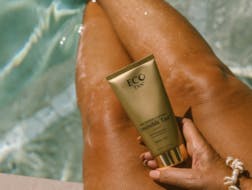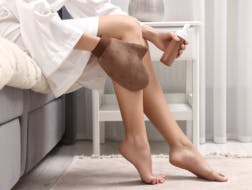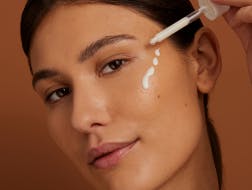Getting The Low Down on Dry Shampoo
Dry Shampoo: The good, the bad and the ugly
Blog Credit: Apotecari HQ
There’s a high likelihood that you have a can of dry shampoo on hand for emergencies but if your reliance on this powdery concoction extends beyond the occasional spritz, read on! We go through the pitfalls of over-use, the ingredients that are best avoided, and what you can do to break the habit.
As with most things, finding balance in your hair care routine is important. We know that over washing can strip your hair of precious oils and upset the natural harmony of your scalp. However, if you take it to the other extreme and rely on dry shampoo far too often, the results can be problematic.
The Good
Dry shampoo in spray form has provided faithful users many benefits since its initial introduction to the market some 50 years ago by French company Klorane. Although even earlier forms such as ‘Minipoo’ became available in the 1940’s.
Dry shampoo can transform your appearance in under a minute.
From a post-gym freshen up to saving you precious time in the morning, dry shampoo can be an incredible asset when used in moderation.
The Bad
If, however, moderation takes a turn towards compulsion, some problems may become apparent. Short and long-term side-effects can pose a threat to your strands and scalp. Incorrect use or overuse of dry shampoo can clog hair follicles (read breakouts!) and build up significantly on the scalp, especially if you’re using more than once between washes.
Dry shampoo isn’t cleaning the hair, its simply absorbing the oils that tend to weigh hair down and make it look dirty. In moderation this instant volume is wonderful but if you’re applying dry shampoo to a dirty or oily scalp and skipping the shower, the dry shampoo simply adds another layer of product that melds into this situation.
The Ugly
Many dry shampoos on the market contain fragrances and their direct contact with your scalp may lead to irritation and inflammation. Excess product build-up and clogged follicles can affect growth rate and lead to breakage and hair fall.
Dandruff, eczema, dermatitis can all be worsened or, indeed caused by incorrect use of dry shampoo.
Telltale signs you are a dry shampoo addict
- Your scalp feels frequently feels itchy and irritated
- You use more than once in between washes
- Dry shampoo replaces at least one of your regular washes
- Flakes and dandruff are present, even though your hair feels oily
- You dry shampoo clean hair ‘for added volume’
What you can do
These tips will help combat the between-wash oiliness and slowly reduce your dependency on dry shampoo.
Balance your oil production naturally
One of the most obvious reasons for dry shampoo’s use is to mask oiliness and greasy-looking hair but what if we told you oil production could be managed differently? Apotecari’s Crowning Glory has been formulated to help your scalp achieve oil balance harmony. Within the first month of use, the scalp starts to balance and the need to wash your hair starts to decrease.
As a bonus, the Gamma Linolenic Acid (GLA) and Linolic Acid (LA) found in Crowning Glory help soothe inflamed scalps and reduce flakiness. If you’ve overdone dry shampoo, Crowning Glory is your new best friend.
Wash hair really well
Scrub-a-dub-dub…A scalp and shampoo brush will help evenly and thoroughly distribute shampoo suds through your hair during washing. Ensuring a deep, even clean will help prevent oily patches that appear soon after.
Try apple cider vinegar (ACV)
A suitably diluted apple cider vinegar rinse may help to balance the pH of the scalp and reduce product build up. Try mixing 3 tablespoons of ACV in 1 cup of warm water. After washing and rinsing your hair with shampoo, apply the ACV mixture and let it sit for up to 5 minutes. Rinse well with cool water.
Stretch hair wash days, without the dry shampoo
Add an extra day between washes, while also skipping the dry shampoo. This may be painful at first but over time a slow adjustment will take place, just be patient.
Combat oil with lemon and aloe
Try combining aloe vera gel (one tablespoon) and lemon juice (one tablespoon) to a cup of warm water and stir to combine. Apply to your hair after washing and leave on for a few minutes before rinsing. Repeat once a week. This mixture will help to control excess sebum production due to its astringent properties.
Don’t over-brush and make sure your bristles are clean!
Over brushing can cause hair to look oily by spreading scalp oils through the hair. Its also important to keep your brush clean to avoid spreading dirt, oils or product back onto clean hair. Try to soak your brushes and other styling tools in a mixture of hot water, white vinegar and baking soda at least once per month to remove build-up and keep them hygienic.


.png?ixlib=gatsbyFP&auto=compress%2Cformat&fit=max&rect=0%2C0%2C252%2C190&w=252&h=190)
.png?ixlib=gatsbyFP&auto=compress%2Cformat&fit=max&rect=68%2C0%2C663%2C500&w=252&h=190)


















